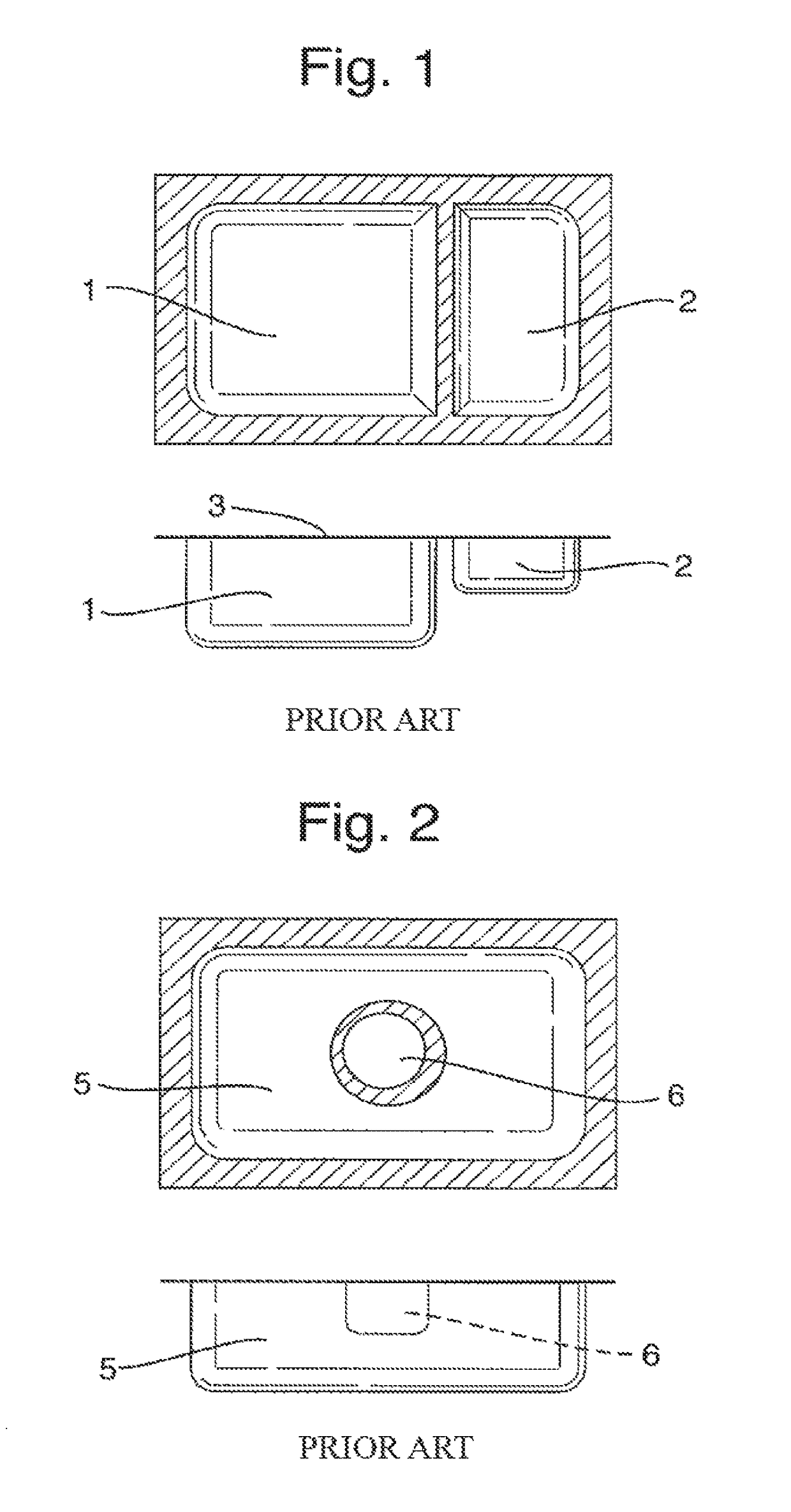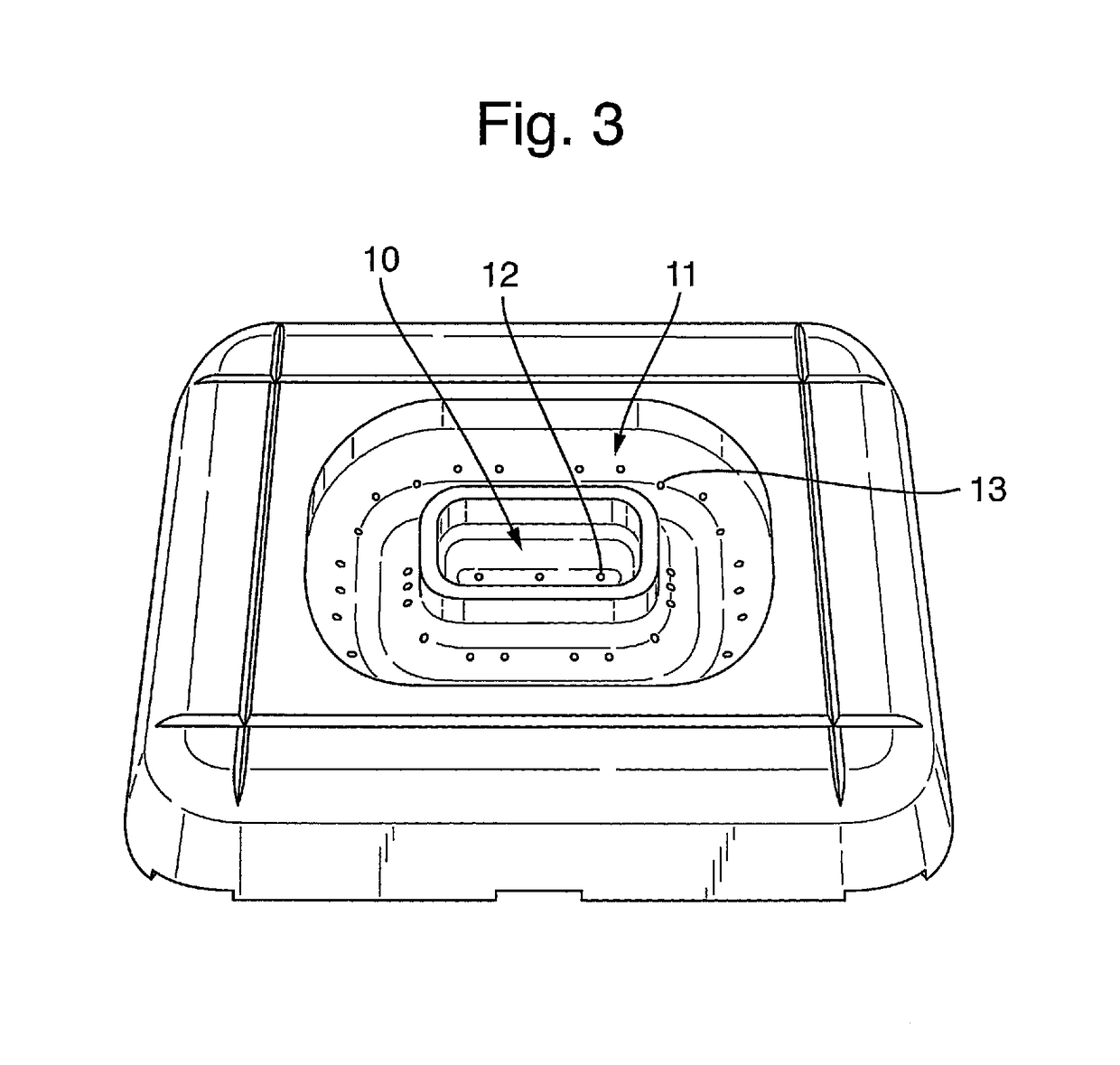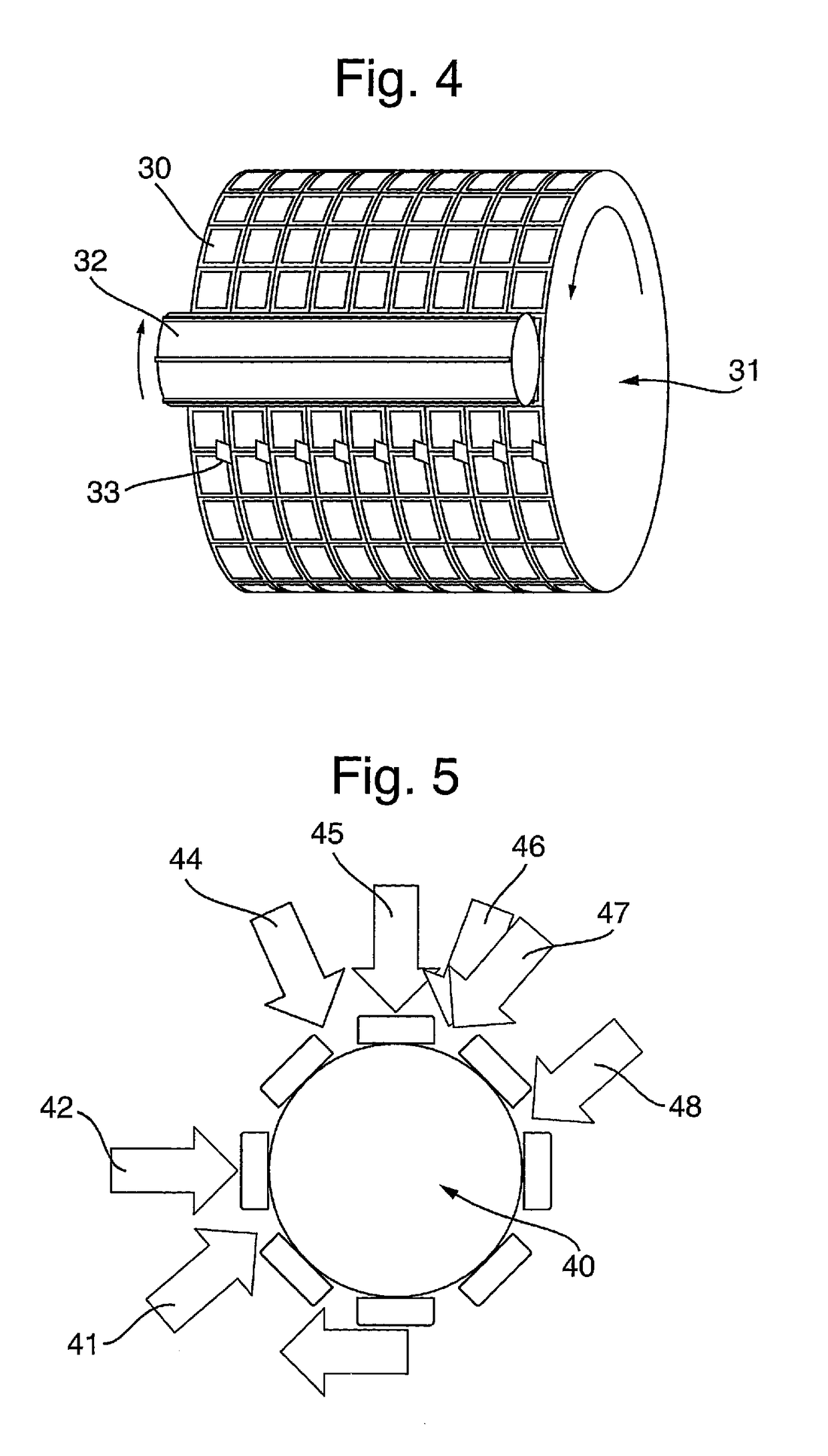Multi-compartment water-soluble capsules
a water-soluble capsule and multi-compartment technology, applied in the field of multi-compartment water-soluble capsules, can solve the problems of leakage, inability to completely prevent the contents from moving, and inability to use, etc., to achieve the effect of increasing the problem of inner compartment filling, high speed, and large and unnecessary outer sealing areas
- Summary
- Abstract
- Description
- Claims
- Application Information
AI Technical Summary
Benefits of technology
Problems solved by technology
Method used
Image
Examples
example 2
spensing
[0121]A capsule as shown in FIG. 6 made from polyvinyl alcohol films and with a liquid filled outer compartment according to the invention was put into the drawer of a Zanussi machine on a 40° C. cotton program. This program allows water through the drawer at ambient temp. After the first inlet (30+ seconds) the capsule was still complete with no signs of dissolving. After the second water inlet (40+ seconds) the capsule was completely gone with no film, liquid or powder residues left. It was further observed that the load in the machine was producing a good foam, confirming that the capsule had gone into the drum and started dissolving.
[0122]The same procedure was done using a commercially available single compartment Ariel liquitab capsule. The whole capsule was still in the drawer after the first and second inlet of water and was still there 30 mins later. Although it had started to deform none of the liquid had come out of the film.
example 3
ater Ingress
[0123]This study looked at benefit of the capsule design according to the invention compared to prior art capsules, in terms of rate of water ingress and liquid release when wet from above.
[0124]The capsule according to the invention was compared with commercially available Rectangular (Persil from Unilever), Square (Ariel from P&G), Multi-compartment Stacked Tide Pods 3 in 1 from P&G and Side-by-side two compartment capsules Persil Duo from Henkel.
[0125]First it was determined that 8 g of water could be held in the “well” between the inner and outer compartments of a capsule according to the invention. Then to observe the effect of exposure to this amount of water sprinkled from above onto each capsule the capsule to be tested was placed on top of an upturned beaker, allowing excess water to flow away as if the capsule was on top of a load of washing. Water was then poured over the capsule, and observations made.
[0126]In order to ensure this was a stress test 16 g of wa...
PUM
| Property | Measurement | Unit |
|---|---|---|
| thickness | aaaaa | aaaaa |
| diameter | aaaaa | aaaaa |
| diameter | aaaaa | aaaaa |
Abstract
Description
Claims
Application Information
 Login to View More
Login to View More - R&D
- Intellectual Property
- Life Sciences
- Materials
- Tech Scout
- Unparalleled Data Quality
- Higher Quality Content
- 60% Fewer Hallucinations
Browse by: Latest US Patents, China's latest patents, Technical Efficacy Thesaurus, Application Domain, Technology Topic, Popular Technical Reports.
© 2025 PatSnap. All rights reserved.Legal|Privacy policy|Modern Slavery Act Transparency Statement|Sitemap|About US| Contact US: help@patsnap.com



